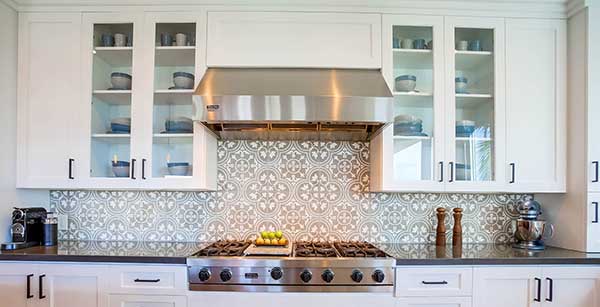The kitchen is the heart of any home. With the right waste management solutions, you can keep it beautiful, functional, and efficient.
At Hollands Custom Cabinets, we know that effective trash solutions right for you, your kitchen, and your lifestyle are important, both for aesthetics and hygiene. Let’s explore some of the latest best practices for built-in receptacles, composting solutions, and the pros and cons of different materials.
Built-in Trash Receptacles vs. Freestanding Bins
One of the most common decisions homeowners face is choosing between built-in trash receptacles and traditional freestanding bins. Each option has its merits, depending on your preferences and kitchen layout.
Integrated with cabinetry, built-in trash receptacles are designed to keep trash out of sight, which contributes to a cleaner, more streamlined appearance. They can be configured to hold multiple bins, facilitating easy segregation of recyclables and general waste. The main advantage here is sanitation. Keeping trash enclosed reduces odors and keeps pests at bay. However, integrating these into existing cabinetry can be more costly and requires precise planning.
Freestanding bins are more versatile and easier to replace or relocate. They offer a practical, low-cost solution for waste management, but they can be unsightly and take up valuable floor space. Additionally, they may not contain odors as effectively as built-in options.
Materials Matter
The choice of materials for trash receptacles plays a significant role in durability, maintenance, and hygiene.
Metal trash cans are generally easier to keep clean and sanitary. Stainless steel, in particular, resists stains and odors and is less prone to damage. However, metal cans often come with more moving parts that tend to wear over time. In terms of aesthetics, metal offers a sleek, modern look but might show dents, scratches, and smudges more easily.
While wooden trash bins bring a warm, natural look to the kitchen, they have some downsides. Wood is a porous material, making it susceptible to mold and mildew if not properly maintained. However, wood trash bins typically have fewer moving parts, translating to longer durability. They require liners or inserts to prevent direct contact with waste, adding an extra layer of cost and maintenance.
Trash receptacles made from plastic, PVC, and similar materials are typically lightweight, affordable, and resistant to rust and corrosion. These materials are easy to clean and maintain but might not be as durable as metal or wood options. They can be prone to cracking or warping over time, especially with heavy use. Also, being non-porous, they don’t promote bacteria or mold growth.
Composting Cabinetry Options
Composting has gained popularity, especially in eco-conscious areas like Southern California where composting has been mandated to decrease the amount of organics in landfills. While composting is great for the environment, integrating a compost system into kitchen cabinetry presents challenges.
Rather than going with built-in options, Holland’s currently recommends utilizing small, dedicated countertop compost bins. These are easy to clean and maintain and keep compost separate from primary waste storage. This setup is more sanitary, reducing the risk of mold and bacteria growth inside your cabinetry.
At present, we are finding there are no effective off-the-shelf solutions for integrating built-in compost bins directly into cabinets. Compost materials are organic and can produce odors and attract pests if not managed correctly. For these reasons, we recommend sticking with countertop bins or even outdoor compost setups for now for a more practical and sanitary solution. Rest assured, Holland’s is closely monitoring the situation and collaborating with industry partners to identify viable built-in solutions.
Trash Compactors: A Less Common but Useful Option
While trash compactors have become less widely used in recent years, they still have their place, particularly in larger homes, businesses, and rural areas where managing waste efficiently is crucial.
Trash compactors reduce the volume of waste, which means fewer trips to the curb (or even further if you live in a remote area) and less frequent emptying of bins. This can be particularly useful for large households or properties where trash collection is less frequent.
Trash compactors do require maintenance and proper installation to avoid mechanical issues. They are an investment and may not be necessary for every household but can be highly effective for those with significant waste management needs.
Let’s Work Together
Deciding how to manage trash in your kitchen is more than just a matter of practicality. It’s about creating a space that is functional, looks great, and is easy to clean and sanitary. Whether you opt for built-in receptacles or freestanding bins, Hollands Custom Cabinets offers custom cabinetry solutions to meet your needs. To explore options for your new or remodeled kitchen, call us today at 619.443.6081 or contact us online.


